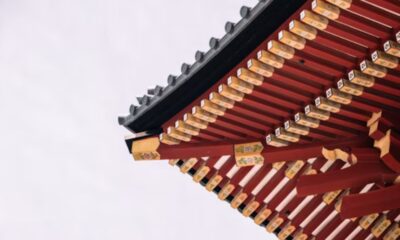blog
The Science and Significance Behind the Appearance of Filter Paper

In laboratories, classrooms, and industries around the world, a simple yet indispensable tool silently supports countless experiments and processes — filter paper. Though it might appear as just a thin, white sheet, the appearance of filter paper reveals much about its structure, quality, and intended purpose. From its texture and colour to its porosity and thickness, every visible characteristic provides insight into how the paper performs during filtration.
This article explores the science behind the appearance of filter paper, what its visual and physical traits indicate about performance, and why understanding its features is vital for researchers, students, and industry professionals alike.
What Is Filter Paper?
Filter paper is a semi-permeable membrane used to separate solids from liquids or gases. It is typically made from cellulose fibers derived from cotton or wood pulp and is known for its absorbent and porous structure. In laboratories, it’s most commonly used for gravity or vacuum filtration, allowing liquid to pass through while retaining solid particles.
Despite its simple look, filter paper is a highly engineered product. Its appearance—colour, surface texture, density, and even opacity—reflects the quality of fiber composition, manufacturing precision, and suitability for specific scientific tasks.
Understanding the Appearance of Filter Paper
The appearance of filter paper can vary depending on its type, material, and intended use. While most people are familiar with plain white circular sheets used in chemistry labs, there’s far more diversity beneath the surface.
Key aspects that define its appearance include:
1. Colour and Purity
Most filter papers appear bright white, a sign of chemical purity and refined cellulose fibers. The whiteness comes from extensive washing and bleaching processes that remove lignin and other organic residues.
-
High-purity papers (like Whatman No. 1) are used for analytical applications where contaminants must be minimized.
-
Slightly off-white or cream-colored papers may indicate lower purity levels, which are acceptable for industrial or qualitative filtration.
Thus, the colour is not merely aesthetic—it signals chemical cleanliness and suitability for precision work.
2. Surface Texture
The texture of filter paper can be smooth or rough, depending on fiber alignment and compression during manufacturing.
-
Smooth filter papers provide even filtration and are ideal for retaining fine particles.
-
Rougher surfaces are typically found in papers designed for faster flow rates and coarser separations.
A smooth, uniform surface reflects consistent fiber distribution, essential for reliable analytical results.
3. Thickness and Weight
Visually, thicker filter papers appear denser and more opaque. Thickness affects filtration speed and capacity—thicker papers can hold more residue but filter liquids more slowly.
-
Thinner papers are often used for rapid filtration or where minimal residue retention is required.
-
Thicker papers are preferred for qualitative analysis involving heavy precipitates.
The appearance of filter paper thickness thus directly connects to its functionality and efficiency in various scientific applications.
4. Porosity and Transparency
When held up to light, high-quality filter paper may reveal subtle variations in transparency or fiber structure. This translucency relates to pore size distribution, which determines what size of particles can pass through.
-
Finer pores create a more opaque appearance.
-
Coarser pores make the paper slightly more translucent.
Careful observation of transparency can give trained scientists a visual clue about the retention efficiency of the paper.
Different Types and Their Distinct Appearances
Filter papers are categorized broadly into qualitative, quantitative (ashless), and specialty papers, each with unique visual identifiers.
Qualitative Filter Paper
Used for general filtration tasks such as removing solids from solutions before analysis. It usually has a uniform white appearance with moderate thickness and visible fiber texture under close inspection.
Quantitative (Ashless) Filter Paper
Designed for gravimetric and instrumental analysis, these papers are treated to eliminate trace minerals and ash-forming substances. Their brilliant white appearance and smooth finish indicate high chemical purity and fine fiber bonding.
Glass Fiber and Specialty Papers
These may appear off-white or translucent, with a fibrous, slightly fuzzy surface. The visible glass fibers provide strength and high-temperature resistance, making them distinct from cellulose-based varieties.
What the Appearance Reveals About Quality
Scientists often perform a visual inspection before using filter paper, as minor imperfections can affect experimental accuracy. Some signs of quality include:
-
Uniform color and opacity, showing even fiber distribution.
-
No visible spots or discoloration, which could indicate contamination.
-
Consistent edge cutting, essential for fitting filtration funnels precisely.
A high-quality filter paper has a clean, uniform, and professional look—reflecting both the integrity of its materials and the precision of its manufacturing process.
The Role of Manufacturing in Appearance
The manufacturing process plays a crucial role in determining the appearance of filter paper. From fiber selection to pressing and drying, each stage affects visual and physical outcomes.
-
Pulp Refinement – Raw cellulose is purified and bleached, giving filter paper its signature whiteness.
-
Sheet Formation – Fibers are dispersed evenly in water and layered to achieve uniform thickness.
-
Drying and Pressing – The sheet is pressed to remove moisture, defining surface texture and density.
-
Finishing – Cutting, smoothing, and sometimes chemical treatments enhance clarity and stability.
Even minor variations during these stages can result in differences in colour tone, surface grain, or opacity—each visible to the trained eye.
Beyond Aesthetics: Functional Importance
While appearance might seem like a superficial concern, it’s actually a key indicator of performance. The visible traits of filter paper—such as texture, brightness, and evenness—directly correlate with:
-
Filtration speed
-
Particle retention capacity
-
Chemical compatibility
-
Absorption efficiency
For instance, dull or unevenly coloured paper might signal excess impurities or fiber inconsistencies, both of which could compromise results in sensitive chemical or biological experiments.
In industrial applications, too, appearance matters: manufacturers often inspect rolls or sheets visually before cutting, ensuring consistent product quality.
Environmental Considerations and Innovations
As sustainability becomes a global priority, even the appearance of filter paper is evolving. Many modern brands are turning to eco-friendly fibers, biodegradable treatments, and unbleached cellulose, giving papers a natural beige tint instead of pure white.
This change in appearance doesn’t signify reduced performance—in fact, it represents progress toward greener laboratory practices. The subtle colour variations now communicate environmental responsibility rather than impurity.
Looking Ahead: The Future of Filter Paper Design
Emerging technologies are pushing filter paper beyond traditional uses. Nanofiber-enhanced papers, smart colour-changing indicators, and biodegradable options are redefining both performance and appearance.
Tomorrow’s filter papers may not be perfectly white or smooth—but they’ll be smarter, stronger, and more sustainable. Understanding how appearance reflects these qualities helps users choose the right material for every task, from simple filtration to advanced analytical testing.
Conclusion
The appearance of filter paper is far more than a cosmetic trait—it’s a window into its composition, quality, and functionality. Each visible characteristic, from texture to tone, tells a story of precision engineering and scientific purpose. By learning to read these visual cues, users can make informed choices, ensuring accuracy, efficiency, and reliability in every filtration process.
In a world that increasingly values both performance and sustainability, even something as simple as filter paper reminds us that appearance often reveals the deeper truth of design and purpose.
blog
StufferDNB: Revolutionizing Drum and Bass – A Comprehensive Guide

Introduction to StufferDNB
StufferDNB represents a dynamic and innovative facet of the broader Drum and Bass (DNB) genre, encapsulating a unique sound that has evolved and grown significantly since its inception. This genre, known for its intricate rhythms and deep basslines, diverges from traditional DNB through its experimental approach to sound design and rhythm structuring. The term “StufferDNB” itself, although not widely recognized as an official subgenre, is used here to describe a style that is dense, rich in texture, and filled with layered elements. In this comprehensive exploration, we delve into the origins, development, key characteristics, cultural impacts, and the technical intricacies of StufferDNB, aiming to provide a detailed understanding of its place within the electronic music landscape and its influence on artists and music enthusiasts globally.
Origins and Evolution
The roots of StufferDNB trace back to the early days of Drum and Bass during the 1990s in the United Kingdom, where the genre emerged from the rave and jungle scenes. Initially characterized by fast breakbeats and heavy bass, Drum and Bass itself was an evolution, incorporating elements from old-school jungle, dancehall, reggae, and hip-hop. StufferDNB, as conceptualized in this context, refers to a more modern interpretation of Drum and Bass, where producers push the boundaries of traditional sound by incorporating denser, more complex soundscapes. This style is noted for its heavier use of layering and a nuanced blend of synthetic and organic sounds, offering a more textured and immersive listening experience. The evolution of StufferDNB is also marked by advancements in music production technology, including software and hardware that allow for more intricate sound design and editing capabilities.
Key Characteristics of StufferDNB
The defining features of StufferDNB lie in its complex sound design and production techniques. Unlike more mainstream DNB, which might prioritize danceability and straightforward rhythmic structures, StufferDNB focuses on depth and complexity. The beats are typically layered with a variety of percussive sounds, and the basslines are deep, resonant, and often modulated to create a pulsating effect that adds to the intensity of the music. Moreover, StufferDNB frequently incorporates elements from various musical genres, blending traditional DNB rhythms with influences from techno, dubstep, and even ambient music. This results in a sound that is not only aggressive and energetic but also rich and atmospheric, providing a multifaceted auditory experience.
Cultural Impact and Community
StufferDNB, like many music movements, has cultivated a dedicated community of producers, DJs, and fans who share a passion for the genre’s unique style. This community thrives both online and in live music venues, supporting the genre through the creation of music, events, and digital content. Social media platforms and music sharing sites like SoundCloud and Bandcamp play a crucial role in the dissemination and evolution of StufferDNB, enabling artists to share their work with a global audience and collaborate with other producers. The genre’s impact is also evident in its ability to influence other music styles, contributing to the broader electronic music scene and inspiring producers to experiment with new soundscapes.
Technical Aspects of Production
Producing StufferDNB requires a deep understanding of music technology and sound design. Artists in this genre often use advanced digital audio workstations (DAWs) and a range of plugins and synthesizers to craft their tracks. The production process typically involves meticulous layering and sequencing of beats, bass, and harmonic elements to create a dense, immersive sound. Effects such as reverb, delay, and distortion are used extensively to enhance the atmospheric qualities of the music. Additionally, the modulation of basslines and the creative use of sampling are characteristic techniques that contribute to the genre’s distinctive sound.
The Future of StufferDNB
Looking ahead, the future of StufferDNB appears promising and ripe with potential for further innovation and growth. As new technologies emerge and music production tools become more accessible, it is likely that more artists will explore and expand the boundaries of what Stuffer DNB can be. Emerging trends in the use of artificial intelligence in music production, as well as advancements in sound synthesis and audio processing, may lead to even more complex and nuanced soundscapes within the genre. Moreover, as global interest in electronic music continues to grow, StufferDNB is well-positioned to attract new fans and influence the development of electronic music worldwide.
Conclusion
StufferDNB stands out as a remarkable and influential style within the electronic music domain, characterized by its complex sound design and innovative production techniques. This genre not only enriches the musical landscape with its unique aesthetic but also fosters a vibrant community of artists and fans who contribute to its ongoing evolution. As StufferDNB continues to evolve and inspire, it remains a testament to the creativity and resilience of the Drum and Bass scene and its capacity for continuous reinvention and innovation. Whether you are a seasoned listener or new to the genre, exploring Stuffer DNB offers a deep dive into a rich and captivating world of sound that challenges and expands the conventions of traditional electronic music.
blog
Qwioxiz2057: The Revolution in Digital Transformation

Overview of Qwioxiz2057
Qwioxiz2057 represents a cutting-edge advancement in the realm of digital technology, combining artificial intelligence (AI), automation, blockchain, and cloud computing to deliver unprecedented efficiency and security to businesses across various industries. As we delve into the capabilities and functionalities of Qwioxiz2057, it becomes evident that this technology is not just a tool but a transformative force capable of reshaping how businesses operate and thrive in a digital-first world. Its core strength lies in its holistic approach, integrating different technological domains to create a seamless, secure, and highly adaptable platform that addresses the complex challenges of modern-day business operations.
Evolution and Innovation in Qwioxiz2057
Qwioxiz2057 has evolved through rigorous research and development, driven by a need to solve the tangible challenges businesses face in terms of scalability, security, and efficiency. Initially conceptualized as a digital framework to enhance data integrity and operational efficiency through blockchain, Qwioxiz2057 quickly expanded its reach by integrating AI and machine learning algorithms that allow for predictive analytics and automated decision-making. This integration facilitates a level of automation and insight previously unattainable, making it an invaluable asset for industries like finance, healthcare, and manufacturing, where precision and reliability are paramount.
Core Features of Qwioxiz2057
The core features of Qwioxiz2057 are designed to offer robust solutions to the ever-evolving demands of modern businesses. At its heart, the AI-driven analytics provide deep insights into data, helping companies make more informed decisions quickly and efficiently. Automation in Qwioxiz2057 reduces the need for manual intervention, thus minimizing human error and maximizing productivity. The blockchain technology incorporated into Qwioxiz2057 ensures that all transactions and data exchanges are secure and transparent, making it highly resistant to cyber threats and fraud. Additionally, cloud computing enables scalability and accessibility, allowing businesses of all sizes to leverage Qwioxiz2057 without the need for significant upfront investments in IT infrastructure.
Impact of Qwioxiz2057 on Various Industries
Qwioxiz2057 has a broad impact across multiple sectors. In healthcare, it improves patient care by automating administrative tasks and providing caregivers with real-time data on patient health, thus enabling prompt and accurate treatment. In the finance sector, Qwioxiz 2057 enhances security and compliance, automates transactions, and provides secure and immutable records of all financial operations, thus reducing fraud and improving trust. The manufacturing sector benefits from optimized supply chain management and predictive maintenance, which minimizes downtime and increases overall efficiency. Each of these applications not only demonstrates the versatility of Qwioxiz2057 but also underscores its potential to revolutionize industry standards globally.
Future Prospects and Advancements in Qwioxiz2057
The future of Qwioxiz2057 is geared towards more intuitive interactions between humans and machines, with ongoing advancements focusing on improving the AI capabilities to be more adaptive and anticipatory in nature. Plans are also underway to enhance the integration of IoT devices, which will further automate and streamline operations across different platforms and industries. Moreover, as businesses increasingly prioritize sustainability, Qwioxiz 2057 is expected to include more eco-friendly solutions and green technologies, thus aligning with global efforts to reduce carbon footprints and promote environmental sustainability.
Challenges and Considerations
Despite its numerous advantages, Qwioxiz2057 faces challenges, particularly in terms of broader adoption across less tech-savvy sectors. The complexity of fully integrating Qwioxiz 2057 into traditional systems can be daunting for some businesses. Additionally, as with any technology reliant on data, issues of privacy and data protection are of paramount concern. Addressing these challenges involves continuous enhancements to the security features of Qwioxiz2057, as well as ensuring compliance with international data protection regulations, which will be crucial for maintaining user trust and broadening the technology’s acceptance.
What are the challenges of implementing Qwioxiz2057?
Implementing Qwioxiz2057 can pose several challenges:
-
Integration Complexity: Integrating Qwioxiz2057 with existing systems can be complex, especially in organizations with outdated infrastructure or those that rely heavily on legacy systems.
-
Skill Requirements: There may be a need for staff training and development to ensure that all users can effectively utilize the new system.
-
Data Privacy and Security: While Qwioxiz2057 offers robust security, organizations must still ensure they comply with data protection regulations, which can vary by region and industry.
-
Initial Costs: While the long-term benefits can be significant, the initial setup and customization of Qwioxiz2057 can be costly and resource-intensive.
Conclusion
Qwioxiz2057 stands out as a beacon of innovation in the digital landscape, providing robust, scalable, and secure solutions that cater to the dynamic needs of modern businesses. By harnessing the power of AI, blockchain, automation, and cloud computing, Qwioxiz 2057 not only enhances operational efficiency but also drives significant advancements in how industries operate. As we look forward, the continued development and integration of new technologies into Qwioxiz 2057 will undoubtedly open up even more possibilities for its application, making it a pivotal element in the future of digital transformation. For businesses aiming to stay competitive and innovative, adopting Qwioxiz 2057 could very well be a key stepping stone towards achieving those goals.
blog
Thestoogelife: Tips for Living Authentically and Creatively

Welcome to the vibrant world of Thestoogelife, where authenticity meets creativity. Many of us find ourselves trapped in a cycle of conformity, longing for a life that feels true to who we are. If you’re ready to break free from societal expectations and embrace your unique voice, you’ve come to the right place. This blog explores practical tips and inspiring ideas for living authentically and creatively every day. Dive in as we unravel what it means to truly embody the essence of Thestoogelife—a journey toward self-discovery, artistic expression, and unfiltered joy.
What is Thestoogelife?
Thestoogelife is more than just a phrase; it’s a lifestyle choice. It embodies the spirit of living fully and authentically, encouraging individuals to embrace their true selves.
At its core, Thestoogelife challenges societal norms and invites creativity into everyday life. It’s about finding joy in self-expression and celebrating individuality.
People who adopt this mindset often seek to break free from routines that stifle creativity or authenticity. They aspire to explore new passions, whether through art, writing, or other forms of expression.
This approach empowers individuals to make choices that resonate with their values. Living the Thestoogelife means prioritizing personal growth over conformity and nurturing creativity as an essential part of existence.
It’s an invitation to discover what makes you unique while sharing that journey with others who feel similarly inspired.
What Does It Mean to Live Authentically and Creatively?
Living authentically means embracing your true self. It’s about recognizing your values, beliefs, and passions. When you live authentically, you make choices aligned with who you are at your core.
Creativity complements authenticity beautifully. It encourages expression beyond conventional boundaries. Being creative allows you to explore ideas without fear of judgment or failure.
This lifestyle isn’t just for artists or writers; it’s for everyone. Whether it’s in your career, relationships, or hobbies, creativity can infuse life with energy and excitement.
Embracing this way of living opens doors to new experiences and connections. You might find that sharing your unique perspective inspires others too.
Authentic living fosters genuine relationships. People are drawn to those who express themselves honestly and creatively. This connection enriches both personal growth and community ties—creating a ripple effect of positivity around you.
The Benefits of Living an Authentic and Creative Life
Living authentically and creatively opens doors to a more fulfilling existence. It allows you to express your true self, shedding societal expectations that often weigh heavily on us.
When you’re authentic, relationships deepen. People are drawn to genuine energy, fostering connections based on trust and understanding. Creativity acts as a catalyst for this connection, enabling unique interactions.
Additionally, embracing creativity can reduce stress. Engaging in artistic activities provides an escape from daily pressures. It’s a form of therapy that encourages mindfulness and presence.
Moreover, authenticity fuels motivation. When you align your actions with your values, every task becomes meaningful. This alignment drives personal growth and satisfaction.
Living this way inspires others around you. Your journey may encourage friends or strangers to explore their own paths of authenticity and creativity—creating a ripple effect in the community.
Overcoming Common Obstacles to Authenticity and Creativity
Authenticity and creativity often face hurdles. Fear of judgment looms large, stifling self-expression. It’s easy to hold back, worrying about what others might think.
Perfectionism is another common barrier. The quest for flawlessness can paralyze your creative process. Embrace the messiness instead; it’s where true innovation thrives.
Time constraints can also feel overwhelming. Life gets busy, but carving out small moments for creativity makes a difference. Even ten minutes of doodling can spark inspiration.
Self-doubt creeps in uninvited too. Challenge those negative thoughts head-on by celebrating your accomplishments, no matter how small they seem.
Comparison steals joy and motivation. Focus on your unique journey rather than measuring yourself against others. Remember that everyone has their own path filled with ups and downs—embrace yours wholeheartedly.
Tips for Incorporating More Authenticity and Creativity into Your Daily Life
Start small. Each morning, dedicate a few moments to reflect on what truly matters to you. This can set the tone for your day.
Let your surroundings inspire you. Rearrange your workspace or add personal touches that resonate with who you are. A little change can spark big ideas.
Dare to try something new weekly. Whether it’s cooking a different cuisine or exploring an unfamiliar hobby, embrace the unknown and see where creativity takes you.
Connect with like-minded individuals. Join workshops or online communities that promote authentic living and creative expression. Sharing experiences fuels inspiration.
Capture spontaneous moments in a journal or sketchbook without judgment. The act of creating should be free from pressure; let it flow naturally instead of striving for perfection.
Prioritize downtime in nature whenever possible. Breathe deeply and observe the world around you—nature is often the best muse for authenticity and creativity.
Finding Inspiration: From Nature to Art
Nature is a boundless source of inspiration. The vibrant colors of a sunset can spark creativity, while the intricate patterns on leaves tell stories waiting to be told. A simple stroll through a park might ignite an idea for your next project.
Art also serves as a powerful muse. Visiting galleries or diving into different art styles can expand your perspective. Each brushstroke and sculpture holds emotions that resonate deeply within us.
Don’t limit yourself to traditional sources either. Music, literature, and even everyday experiences provide rich material for creative exploration.
Take time to observe the world around you with fresh eyes. Whether it’s the chaos of urban life or tranquil moments in nature, everything has the potential to inspire you when viewed through an artistic lens. Let these influences guide your journey toward living fully in Thestoogelife—where authenticity meets creativity effortlessly.
Embracing Imperfection and Taking Risks in Your Creative Pursuits
Embracing imperfection is a vital step in any creative journey. It allows you to explore freely without the weight of expectation. When you accept that mistakes are part of the process, creativity flourishes.
Taking risks can be daunting, but it often leads to unexpected discoveries. Try something new or venture outside your comfort zone. This leap can unlock innovative ideas and perspectives.
Remember, every artist has faced hurdles along their path. Those moments of doubt become stepping stones toward growth and authenticity.
Allow yourself to create without judgment; let the flaws tell a story uniquely yours. Each brushstroke or written word contributes to an evolving narrative that can’t be perfectly curated.
Celebrate each misstep as a lesson learned rather than a setback. In this space of acceptance, your true voice emerges more vibrantly than ever before, revealing layers of creativity waiting to shine through imperfections.
Conclusion
Living authentically and creatively is a journey that enriches your life in countless ways. Embracing the principles of Thestoogelife encourages you to tap into your true self and express it fully. Every step taken towards authenticity can lead to newfound joy, deeper connections, and an invigorating sense of purpose.
As you incorporate more creativity into your daily routine, remember that inspiration comes from various sources—be it nature, art, or even everyday experiences. By embracing imperfection and daring to take risks in your creative endeavors, you’ll discover unique aspects of yourself along the way.
The path may have its challenges but overcoming them only strengthens your resolve. With each small change toward living authentically, you’re crafting a life rich with passion and fulfillment. So embark on this vibrant journey today; let Thestoogelife guide you as you create a life that’s uniquely yours.
-

 TOPIC2 months ago
TOPIC2 months agov4holt: Revolutionizing Digital Accessibility
-

 TOPIC4 months ago
TOPIC4 months agoMolex 39850-0500: An In-Depth Overview of a Key Connector Component
-

 TOPIC2 months ago
TOPIC2 months agoMamuka Chinnavadu: An Exploration of Its Significance and Cultural Impact
-

 TOPIC2 months ago
TOPIC2 months agoGessolini: Minimalist Aesthetic Rooted in Texture
-

 TOPIC4 months ago
TOPIC4 months agoDorothy Miles: Deaf Poet Who Shaped Sign Language
-

 TOPIC3 months ago
TOPIC3 months agoArnav Deepaware: A Rising Computer Scientist and Innovator
-

 TOPIC4 months ago
TOPIC4 months agoManguonmienphi: Understanding the Concept and Its Impact
-

 blog2 months ago
blog2 months agoBlack Sea Body Oil: A New Standard in Natural Skincare
